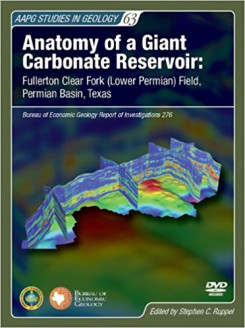Anatomy of a Giant Carbonate Reservoir
Studies 63 documents, in detail, the necessary steps required to develop and test methodologies for improved imaging, measurement, modeling, and prediction of reservoir properties in carbonate reservoirs. The multidisciplinary study integrates geology, geophysics, petrophysics, engineering, and reservoir modeling to define reservoir architecture and the distribution of remaining oil in one of the largest carbonate reservoirs in the Permian Basin. The methods and results detailed here provide an excellent basis for improved characterization and remaining resource targeting that can be applied to all carbonate reservoirs.
- Genre: All Books, Carbonates
Cast & Characters
| 1-4 | Summary of Reservoir Characterization Studies in the Fullerton Clear Fork Reservoir |
| 5-48 | Facies and Sequence Stratigraphy: Critical Tools for Reservoir Framework Definition, Fullerton Clear Fork Reservoir, Texas |
| 49-66 | Integration of Rock Fabrics and Stratigraphy for Petrophysical Quantification of Reservoir Framework |
| 67-76 | Developing a Wireline-Log Database and a Basis for Determining Reservoir Porosity |
| 77-92 | Calculation of Permeability and Initial Water Saturations from Wireline Logs in a Mature Carbonate Reservoir |
| 93-110 | Construction and Analysis of Three-Dimensional Seismic Porosity Inversion Models |
| 111-143 | Reservoir Modeling and Simulation of the Fullerton Clear Fork Reservoir, Andrews County, Texas |

